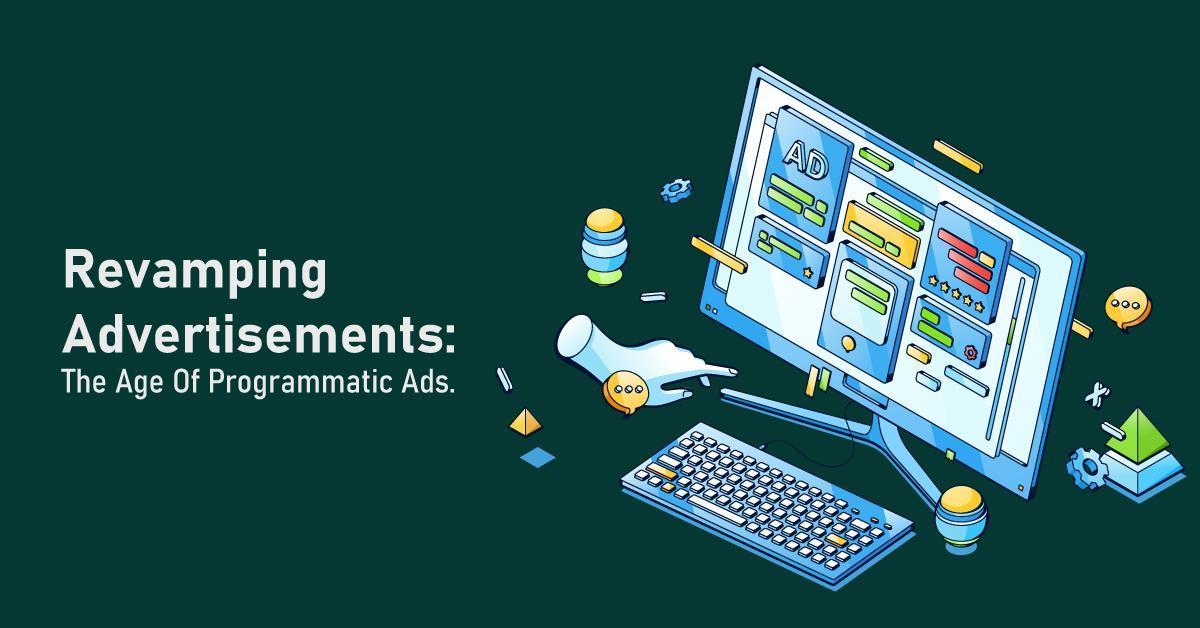The first Google voice assistant launched back in 2012, came as an awe-inspiring surprise to all. With the technological advancement of speech recognition, researchers predicted an uprise in the use of AI in the marketing industry. Today, many global marketing conferences discuss its applications in the field of advertising. Read ahead to explore insights into the world of AI and programmatic advertising, from the perceptive discussions at the Marketing 2.0 Conference.
What Is Programmatic Advertisement-
In simple words, programmatic advertising refers to the act of buying or selling ads with the use of technology. The word programmatic refers to Artifially Intelligent tools. Programmatic advertising employs automated technology and algorithmic tools. The term “programmatic” refers to the process of buying and selling advertisements in the advertising space.
Upcoming retail conferences in Vegas propose that programmatic advertising uses real-time bidding to buy and sell ad space on a per-impression basis. In contrast to the traditional manual methods of purchasing ads, the use of AI actually has multiple advantages. Let’s explore them!
Advantages Of Programmatic Advertisement -
Various brand marketing conferences of 2023 have invited experts and researchers to explore the uses and applications of programmatic advertisement in the present day. Some experts recognized that programmatic advertising allowed them to reach potential customers at micro-moments in their day and respond to them in real time. Using AI-driven ads also freed up workloads, allowing marketers to spend more time strategizing and innovating. Broadly, its benefits can be discussed as follows-
- Quick and time-saving -
Traditional advertising takes time. Creating requests for proposals (RFPs), quotes, negotiating, and creating insertion orders takes up quite some effort and time. The process is much more streamlined with programmatic advertising. Upcoming retail conferences in Vegas have reviewed real-time bidding practices as they allow advertisers to buy and place ads quickly. By serving ads to relevant audiences and minimizing ad fraud risk, programmatic media buying reduces wasted ad impressions.
- Cost-Effectiveness -
Another benefit of programmatic advertising is that it can be more efficient and cost-effective than traditional advertising methods. By automating the buying and selling of ad space, programmatic advertising can reduce the time and resources required to manage your campaigns. Additionally, by optimizing your targeting and placement using data and algorithms, you can improve your ad performance and maximize your return on investment.
- Greater Outreach -
Programmatic advertising can be an effective way to achieve greater outreach for your advertising campaigns. One of the key advantages of programmatic advertising is that it can help you reach a larger audience in a more targeted way. By using data to understand the characteristics and behaviors of your target audience, you can create more personalized and relevant ads that are more likely to resonate with them. Speakers at global marketing conferences suggest using programmatic advertising to reach users across multiple devices and platforms, including websites, social media, and mobile apps.
What Do Experts Suggest For Greater Ad Outreach -
The Marketing 2.0 Conference invites market experts to discuss the effective use of AI ad practices. To achieve greater outreach with programmatic advertising, experts believe that it's important to have a clear understanding of your target audience and their interests and behaviors. You should also have a well-defined strategy for your advertising campaigns, including specific goals and metrics to measure your success. Finally, it's essential to work with a reputable programmatic advertising platform or partner who can help you navigate the complexities of the technology and optimize your campaigns for maximum impact.
Transparency is another advantage of programmatic ads. Ads are purchased in bulk with traditional media buying, and advertisers have little control over inventory and placement. With AI-powered ads, advertisers can be more confident that their ads will appear in relevant places. This characteristic of programmatic advertising is influencing the flow of brand marketing conferences of 2023, making them more tech-focused.
Platforms for Programmatic advertising -
Automated technology has advanced significantly over the years. As a result, today there are numerous kinds of programmatic platforms. These are classified into three types:
- Platform for the sale of securities-
This platform, also known as a "supply-side platform," enables publishers to sell ad impressions to advertisers in real time. This platform includes DSPs (demand side platforms) as well as ad exchanges.
- Platform for demand generation-
Advertisers can use this platform to buy ad inventory across multiple platforms at the same time.
- Exchangers of advertisements-
This is how SSPs (Supply side platforms) distribute ad inventory to DSPs. DSPs connect to an ad exchanger, where ad prices fluctuate based on the inventory's competitiveness.
How has AI influenced the marketing field -
As Amazon Echo, Google Home, and Apple push forward with speech recognition on virtual assistant devices in our homes, advertisers have a whole new opportunity to experiment with AI’s utility. Researchers at brand marketing conferences in 2023 state that Amazon is currently in 15 million homes and is working on advertising opportunities for Clorox, Proctor & Gamble, and other companies to promote their products on Alexa. Naturally, AI-powered ads have a powerful momentum going on currently.
Some of the best impacts of programmatic advertisement are summarised below -
- Facebook Messenger, WhatsApp, and Slack have begun to use AI to reduce the human labor involved in answering simple customer support questions -
- Chatbots powered by AI respond to customer inquiries by chatting online under the supervision of customer support technicians and helpdesk prophets. These chatbots analyze the keywords in the questions typed by users and generate likely answers.
- Ad networks were created instead of directly negotiating ads between publishers and advertisers. These are platforms that collect unsold inventory from inventories and sell it at a discount to advertisers., maximizing accuracy and minimizing time and costs.
- When a web page is loaded, ad networks and other monetization platforms use real-time bidding (RTB) to make transactions in real-time. An effective ad strategy and a key agenda for discussion in upcoming retail conferences in Vegas.
- When a visitor enters a website, a request with website information is sent to an ad exchange. This data is matched against available advertisers, and a real-time auction takes place between them. The ad space is immediately awarded to the highest bidder. Programmatic advertising, particularly when combined with contextual marketing, allows for more precise targeting.
Are Their Shortcomings To Programmatic Advertisement?
Programmatic, like other forms of media, has become commoditized. Everyone is competing in the same arena, and some types of advertising may be scarce. With the growing popularity of Programmatic Guaranteed, global marketing conferences agree that an increasing amount of non-commoditized inventory is becoming programmatically available to advertisers.
Additionally, there is a certain learning curve that is associated with such advertising. Programmatic requires an exponential learning trajectory that can be intimidating at first. Working with partners, agencies, or Amazon Ads directly can help advertisers ease into programmatic advertising.
As discussed in the benefits, transparency may also be considered a drawback. While programmatic ads give advertisers more control over viewability and where their ads appear, advertisers prioritize brand safety and transparency. Such issues are addressed by Amazon Ads and many third-party solutions in the US today.
Though there may be market risks related to AI ads, upcoming retail conferences in Vegas would argue that brands that do not use programmatic advertising may miss out on the benefits of efficiency, reach, transparency, and accountability. Its necessity is thus backed up by expert opinions.
Where Might Programmatic Advertising Take Us In The Future?
The future of programmatic advertising in the US looks very promising, as it is a rapidly growing industry with significant potential for continued innovation.
Programmatic advertising is becoming increasingly popular among marketers, and adoption is expected to continue to grow. In fact, eMarketer predicts that programmatic ad spending in the US will reach $68.87 billion by 2023, up from $47.37 billion in 2018.
Global marketing conferences predict 3 crucial trends that might affect advertising in the future.
- Continued shift to mobile:
As more and more people use mobile devices to access the internet, programmatic advertising is shifting toward mobile platforms. According to eMarketer, mobile programmatic ad spending is expected to reach $51.62 billion in the US by 2023.
- More emphasis on data privacy:
Concerns around data privacy and regulation are likely to increase, which may impact the way programmatic advertising operates. New laws such as the California Consumer Privacy Act (CCPA) and the General Data Protection Regulation (GDPR) in Europe have already introduced stricter rules around data collection and usage.
- Continued development of AI and machine learning:
As technology continues to advance, we can expect to see more sophisticated applications of AI and machine learning in programmatic advertising. This could include improved targeting, ad optimization, and better prediction of consumer behavior.
Bottom Line -
Speakers from brand marketing conferences in 2023 would agree that programmatic advertising is likely to continue to grow and evolve in the US, driven by advancements in technology and increased adoption.
As such, it will be important for marketers and advertisers to stay up-to-date with the latest trends and best practices to ensure they can effectively leverage programmatic advertising to achieve their goals. The Marketing 2.0 Conference is the perfect platform to gain the most up-to-date tech and marketing facts, and the latest buzz around marketing companies.



